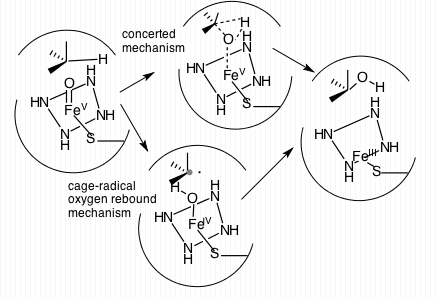|
Terfenadine
Terfenadine is an antihistamine formerly used for the treatment of allergic conditions. It was brought to market by Hoechst Marion Roussel (now Sanofi) and was marketed under various brand names, including Seldane in the United States, Triludan in the United Kingdom, and Teldane in Australia. It was superseded by fexofenadine in the 1990s due to the risk of a particular type of disruption of the electrical rhythms of the heart (specifically cardiac arrhythmia caused by QT interval prolongation) and has been withdrawn from markets worldwide. Pharmacology Terfenadine acts as a peripherally-selective antihistamine, or antagonist of the histamine H1 receptor. It is a prodrug, generally completely metabolized to the active form fexofenadine in the liver by the enzyme cytochrome P450 3A4. Due to its near complete metabolism by the liver immediately after leaving the gut, terfenadine normally is not measurable in the plasma. Terfenadine itself, however, is cardiotoxic at high ... [...More Info...] [...Related Items...] OR: [Wikipedia] [Google] [Baidu] |
CYP3A4
Cytochrome P450 3A4 (abbreviated CYP3A4) () is an important enzyme in the body, mainly found in the liver and in the intestine, which in humans is encoded by ''CYP3A4'' gene. It organic redox reaction, oxidizes small foreign organic molecules (xenobiotics), such as toxins or drugs, so that they can be removed from the body. It is highly homologous to CYP3A5, another important CYP3A enzyme. While many drugs are deactivated by CYP3A4, there are also some drugs that are ''activated'' by the enzyme. Some substances, such as some drugs and furanocoumarins present in grapefruit juice, interfere with the action of CYP3A4. These substances will, therefore, either amplify or weaken the action of those drugs that are modified by CYP3A4. CYP3A4 is a member of the cytochrome P450 family of oxidizing enzymes. Several other members of this family are also involved in drug metabolism, but CYP3A4 is the most common and the most versatile one. Like all members of this family, it is a hemoprote ... [...More Info...] [...Related Items...] OR: [Wikipedia] [Google] [Baidu] |
Cytochrome P450 3A4
Cytochrome P450 3A4 (abbreviated CYP3A4) () is an important enzyme in the body, mainly found in the liver and in the intestine, which in humans is encoded by ''CYP3A4'' gene. It oxidizes small foreign organic molecules (xenobiotics), such as toxins or drugs, so that they can be removed from the body. It is highly homologous to CYP3A5, another important CYP3A enzyme. While many drugs are deactivated by CYP3A4, there are also some drugs that are ''activated'' by the enzyme. Some substances, such as some drugs and furanocoumarins present in grapefruit juice, interfere with the action of CYP3A4. These substances will, therefore, either amplify or weaken the action of those drugs that are modified by CYP3A4. CYP3A4 is a member of the cytochrome P450 family of oxidizing enzymes. Several other members of this family are also involved in drug metabolism, but CYP3A4 is the most common and the most versatile one. Like all members of this family, it is a hemoprotein, i.e. a protein cont ... [...More Info...] [...Related Items...] OR: [Wikipedia] [Google] [Baidu] |
Fexofenadine
Fexofenadine, sold under the brand name Allegra among others, is an antihistamine medication used in the treatment of allergy symptoms such as allergic rhinitis and urticaria. Therapeutically, fexofenadine is a selective peripheral H1 blocker. It is classified as a second-generation antihistamine because it is less able to pass the blood–brain barrier and cause sedation, compared to first-generation antihistamines. It was patented in 1979 and came into medical use in 1996. It is on the World Health Organization's List of Essential Medicines. Fexofenadine has been manufactured in generic form since 2011. In 2022, it was the 257th most commonly prescribed medication in the United States, with more than 1million prescriptions. Medical uses Fexofenadine is used for relief from physical symptoms associated with seasonal allergic rhinitis and for treatment of hives, including chronic urticaria. It does not cure, but rather prevents the aggravation of allergic rhinitis and chro ... [...More Info...] [...Related Items...] OR: [Wikipedia] [Google] [Baidu] |
Erythromycin
Erythromycin is an antibiotic used for the treatment of a number of bacterial infections. This includes respiratory tract infections, skin infections, chlamydia infections, pelvic inflammatory disease, and syphilis. It may also be used during pregnancy to prevent Group B streptococcal infection in the newborn, and to improve delayed stomach emptying. It can be given intravenously and by mouth. An eye ointment is routinely recommended after delivery to prevent eye infections in the newborn. Common side effects include abdominal cramps, vomiting, and diarrhea. More serious side effects may include ''Clostridioides difficile'' colitis, liver problems, prolonged QT, and allergic reactions. It is generally safe in those who are allergic to penicillin. Erythromycin also appears to be safe to use during pregnancy. While generally regarded as safe during breastfeeding, its use by the mother during the first two weeks of life may increase the risk of pyloric stenosis in ... [...More Info...] [...Related Items...] OR: [Wikipedia] [Google] [Baidu] |
Antihistamine
Antihistamines are drugs which treat allergic rhinitis, common cold, influenza, and other allergies. Typically, people take antihistamines as an inexpensive, generic (not patented) drug that can be bought without a prescription and provides relief from nasal congestion, sneezing, or hives caused by pollen, dust mites, or animal allergy with few side effects. Antihistamines are usually for short-term treatment. Chronic allergies increase the risk of health problems which antihistamines might not treat, including asthma, sinusitis, and lower respiratory tract infection. Consultation of a medical professional is recommended for those who intend to take antihistamines for longer-term use. Although the general public typically uses the word "antihistamine" to describe drugs for treating allergies, physicians and scientists use the term to describe a class of drug that opposes the activity of histamine receptors in the body. In this sense of the word, antihistamines are subc ... [...More Info...] [...Related Items...] OR: [Wikipedia] [Google] [Baidu] |
Prodrug
A prodrug is a pharmacologically inactive medication or compound that, after intake, is metabolized (i.e., converted within the body) into a pharmacologically active drug. Instead of administering a drug directly, a corresponding prodrug can be used to improve how the drug is absorbed, distributed, metabolized, and excreted (ADME). Prodrugs are often designed to improve bioavailability when a drug itself is poorly absorbed from the gastrointestinal tract. A prodrug may be used to improve how selectively the drug interacts with cells or processes that are not its intended target. This reduces adverse or unintended effects of a drug, especially important in treatments like chemotherapy, which can have severe unintended and undesirable side effects. History Many herbal extracts historically used in medicine contain glycosides (sugar derivatives) of the active agent, which are hydrolyzed in the intestines to release the active and more bioavailable aglycone. For example, sal ... [...More Info...] [...Related Items...] OR: [Wikipedia] [Google] [Baidu] |
Oral Administration
Oral administration is a route of administration whereby a substance is taken through the Human mouth, mouth, swallowed, and then processed via the digestive system. This is a common route of administration for many medications. Oral administration can be easier and less painful than other routes of administration, such as Injection (medicine), injection. However, the onset of action is relatively low, and the effectiveness is reduced if it is not absorbed properly in the digestive system, or if it is broken down by digestive enzymes before it can reach the bloodstream. Some medications may cause gastrointestinal side effects, such as nausea or vomiting, when taken orally. Oral administration can also only be applied to conscious patients, and patients able to swallow. Terminology ''Per os'' (; ''P.O.'') is an adverbial phrase meaning literally from Latin "through the mouth" or "by mouth". The expression is used in medicine to describe a treatment that is taken orally (but not ... [...More Info...] [...Related Items...] OR: [Wikipedia] [Google] [Baidu] |
Liver
The liver is a major metabolic organ (anatomy), organ exclusively found in vertebrates, which performs many essential biological Function (biology), functions such as detoxification of the organism, and the Protein biosynthesis, synthesis of various proteins and various other Biochemistry, biochemicals necessary for digestion and growth. In humans, it is located in the quadrants and regions of abdomen, right upper quadrant of the abdomen, below the thoracic diaphragm, diaphragm and mostly shielded by the lower right rib cage. Its other metabolic roles include carbohydrate metabolism, the production of a number of hormones, conversion and storage of nutrients such as glucose and glycogen, and the decomposition of red blood cells. Anatomical and medical terminology often use the prefix List of medical roots, suffixes and prefixes#H, ''hepat-'' from ἡπατο-, from the Greek language, Greek word for liver, such as hepatology, and hepatitis The liver is also an accessory digestive ... [...More Info...] [...Related Items...] OR: [Wikipedia] [Google] [Baidu] |
Enzyme
An enzyme () is a protein that acts as a biological catalyst by accelerating chemical reactions. The molecules upon which enzymes may act are called substrate (chemistry), substrates, and the enzyme converts the substrates into different molecules known as product (chemistry), products. Almost all metabolism, metabolic processes in the cell (biology), cell need enzyme catalysis in order to occur at rates fast enough to sustain life. Metabolic pathways depend upon enzymes to catalyze individual steps. The study of enzymes is called ''enzymology'' and the field of pseudoenzyme, pseudoenzyme analysis recognizes that during evolution, some enzymes have lost the ability to carry out biological catalysis, which is often reflected in their amino acid sequences and unusual 'pseudocatalytic' properties. Enzymes are known to catalyze more than 5,000 biochemical reaction types. Other biocatalysts include Ribozyme, catalytic RNA molecules, also called ribozymes. They are sometimes descr ... [...More Info...] [...Related Items...] OR: [Wikipedia] [Google] [Baidu] |
HERG
hERG (the human '' Ether-à-go-go''-Related Gene) is a gene () that codes for a protein known as Kv11.1, the alpha subunit of a potassium ion channel. This ion channel (sometimes simply denoted as 'hERG') is best known for its contribution to the electrical activity of the heart: the hERG channel mediates the repolarizing ''I''Kr current in the cardiac action potential, which helps coordinate the heart's beating. When this channel's ability to conduct electrical current across the cell membrane is inhibited or compromised, either by application of drugs or by rare mutations in some families, it can result in a potentially fatal disorder called long QT syndrome. Conversely, genetic mutations that increase the current through these channels can lead to the related inherited heart rhythm disorder short QT syndrome. A number of clinically successful drugs in the market have had the tendency to inhibit hERG, lengthening the QT and potentially leading to a fatal irregularity of t ... [...More Info...] [...Related Items...] OR: [Wikipedia] [Google] [Baidu] |
Cardiotoxic
Cardiotoxicity is the occurrence of heart dysfunction as electric or muscle damage, resulting in heart toxicity. This can cause heart failure, arrhythmia, myocarditis, and cardiomyopathy in patients. Some effects are reversible, while in others, permanent damage requiring further treatment may arise. The heart becomes weaker and is not as efficient in pumping blood. Cardiotoxicity may be caused by chemotherapy (a usual example is the class of anthracyclines) treatment and/or radiotherapy; complications from anorexia nervosa; adverse effects of heavy metals intake; the long-term abuse of or ingestion at high doses of certain strong stimulants such as cocaine; or an incorrectly administered drug such as bupivacaine. Mechanism Many mechanisms have been used to explain cardiotoxicity. While many times, differing etiologies share the same mechanism, it generally depends on the agent inducing cardiac damage. For example, the primary mechanism is thought to be oxidative stress on cardia ... [...More Info...] [...Related Items...] OR: [Wikipedia] [Google] [Baidu] |




